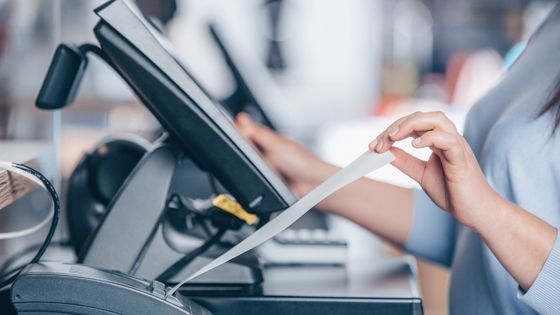If you are wondering, “how do I record POS transactions?”, then you are at the right place. We will give you a detailed explanation of this topic. There are a few different ways to record POS transactions.
The most common is to use POS software that is compatible with your accounting software. This will allow you to automatically sync your sales data with your accounting records. Alternatively, you can manually enter your sales data into your accounting software.
Check if you need Restaurant POS Software for your Business.
All You Need To Know: How Do I Record POS Transactions
If you’re looking for a way to record your POS transactions, you’ve come to the right place! In this blog post, we will discuss several methods that you can use to record your transactions. We will also provide some tips on how to make the process easier and more efficient. Let’s get started!
One of the first things you need to do when recording your POS transactions is to decide what format you want to use. There are many different ways to record this information, so it’s important that you choose a method that will work best for you and your business.
For example, some businesses prefer to use paper receipts while others prefer to use digital methods such as an Excel spreadsheet. It’s up to you to decide which format is best for your needs.
Once you’ve decided on a format, the next step is to gather all of the necessary information. This includes the date, time, and amount of each transaction. You’ll also need to include the name and contact information of the customer, as well as any other relevant details. This information can be gathered manually or through POS software.
Once you have all of the necessary information, you can begin to record your transactions. If you’re using paper receipts, you’ll need to fill out a form for each transaction.
Make sure that you include all of the required information so that you can easily track and review your records later. If you’re using digital methods, such as an Excel spreadsheet, you can simply enter the information into the appropriate cells.
Once you’ve recorded all of your transactions, it’s important to review them regularly. This will help you catch any errors or discrepancies. Additionally, reviewing your records will help you identify any trends that may be occurring.
For example, if you notice that a particular customer tends to make large purchases during a particular time of day, you may want to adjust your hours or pricing accordingly.
Recording your POS transactions doesn’t have to be a difficult or time-consuming task. By using the tips and tricks we’ve discussed in this blog post, you can make the process much easier and more efficient. Give it a try today!
5 Reasons To Record POS Transactions
1) To Keep Track Of Your Inventory Levels – By recording all of your transactions related to pos for stadium, pos for travel etc. you can quickly and easily see what items are selling well and which ones aren’t. This information is essential for managing your inventory levels and making sure you have the right products in stock at all times.
2) To Monitor Your Employees’ Performance – If you’re using a POS system, then you can use it to track your employees’ sales. This information can be helpful for identifying which employees are doing a great job and which ones need some improvement.
3) To Spot Trends In Customer Behavior – Another benefit of tracking your POS transactions is that it allows you to see patterns in customer behavior. For example, you might notice that certain items are always purchased together. This information can be useful for creating marketing campaigns or special offers that target these customers.
4) To Avoid Fraud – Recording all of your POS transactions can also help you avoid fraud. If you ever have a dispute with a customer, you’ll be able to review the transaction history and identify any suspicious activity.
5) To Improve Your Customer Service – Finally, tracking your POS transactions can help you improve your customer service. By seeing which items are being returned most often, you can make changes to your products or store policies that will reduce the number of returns.
Point-of-sale systems are an essential part of any business, so it’s important to make sure you’re using them to their full potential. Recording all of your POS transactions is a great way to do this.
FAQs: How Do I Record POS Transactions
Q 1: Which POS Transactions Do You Mean?
A 1: Point of Sales is referred to as POS. When a customer buys something from a merchant offline or online, they typically engage in a POS transaction. POS systems are used to keep track of and document all business dealings between buyers and sellers.
Q 2: Are purchases Made Online Considered POS?
A 2: A point-of-sale transaction, in my understanding, is one in which money is exchanged for goods or services. Therefore, a purchase made online would be POS. In an ATM transaction, the customer is merely taking their own money out of their account; it is not a POS transaction.
Q 3: What Is A Cash Withdrawal From A POS?
A 3: POS terminals allow you to make cash withdrawals using your debit card or a prepaid card with an open system. Cash withdrawals using UPI are also possible. For you to use this service, you do not need to make a purchase from the merchant, and the store cannot legally require you to do so.
Final Thoughts
So, that’s how you record a POS transaction! We hope this article has been helpful and answered any questions you may have had about the process. Remember to always keep your point of sale system up-to-date with the latest software patches and security updates to ensure optimal performance and protect your business against fraud.
If you have any further questions or need help setting up or troubleshooting your POS system, please don’t hesitate to contact our support team. Thanks for reading!




















